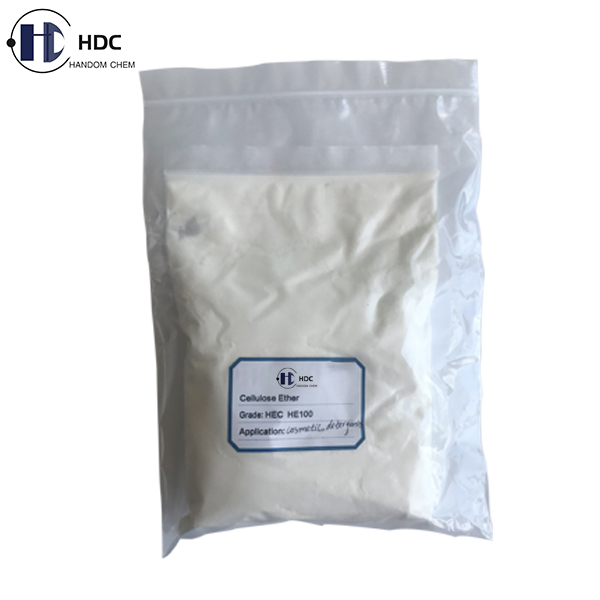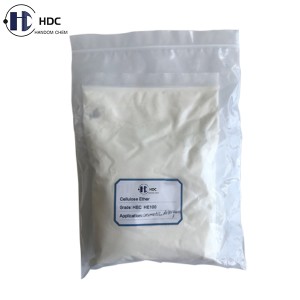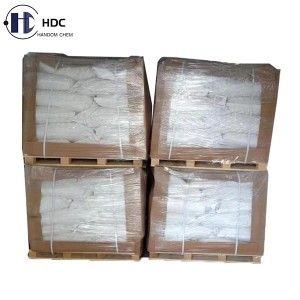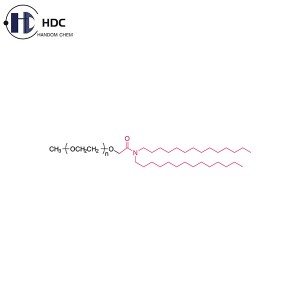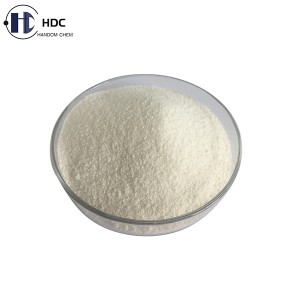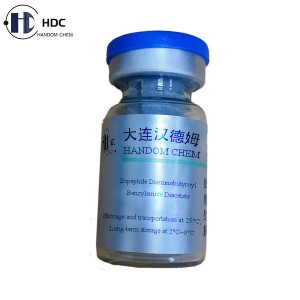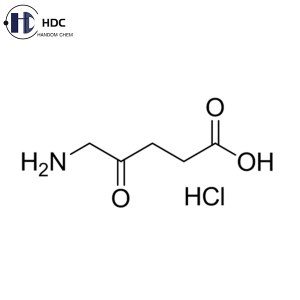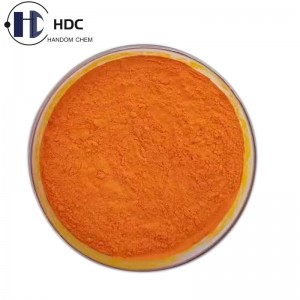Hydroxypropyl Methyl Cellulose
Brief Introduction:
Hydroxypropyl methylcellulose, also known as hypromellose, is a kind of nonionic cellulose mixed ether. It is a semi-synthetic, inactive, viscoelastic polymer that is often used as a lubricant in ophthalmology, or as an adjuvant or excipient in oral pharmaceuticals.
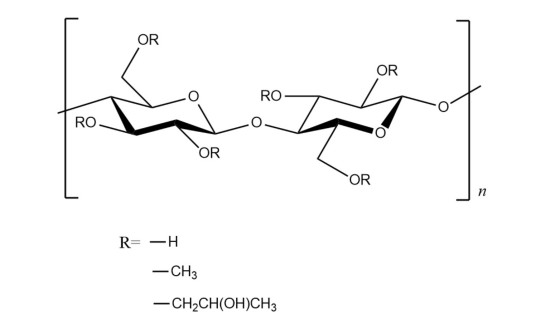
Specifications of Hydroxypropyl Methyl Cellulose:
| Test Items | Specifications |
| Appearance | White or slightly yellow powder |
| Viscosity
(NDJ-1, 2%) |
185,000mpa·s ~ 215,000mpa·s |
| Moisture | Not more than 6.0% |
| Ash | Not more than 5.0% |
| Particle Size | 99% pass through 80 mesh sieve |
| pH Value | 6.0 ~ 8.0 |
Applications:
1. Construction Industry:
As a water-retaining agent and retarder of cement mortar, it makes the mortar pumpable. In plaster, gypsum, putty powder or other building materials as a binder to improve spreadability and prolong work time. It can be used as paste tile, marble, plastic decoration, paste reinforcement, and can also reduce the amount of cement. The water-retaining performance of HPMC prevents the slurry from cracking due to drying too quickly after application, and enhances the strength after hardening.
2. Ceramic Manufacturing Industry:
It is widely used as a binder in the manufacture of ceramic products.
3. Coating Industry:
It is used as a thickener, dispersant and stabilizer in the coating industry, and has good compatibility in water or organic solvents. As a paint remover.
4. Ink Printing:
It is used as a thickener, dispersant and stabilizer in the ink industry, and has good compatibility in water or organic solvents.
5. Plastic:
Used as forming release agent, softener, lubricant, etc.
6. Polyvinyl Chloride:
It is used as a dispersant in the production of polyvinyl chloride, and it is the main auxiliary agent for preparing PVC by suspension polymerization.
7. Pharmaceutical Industry:
Coating materials; film materials; rate-controlling polymer materials for sustained-release preparations; stabilizers; suspending agents; tablet binders; viscosity-increasing agents.
8. Others:
It is also widely used in leather, paper products, fruit and vegetable preservation and textile industries.
Packaging:
25kg net weight paper-plastic composite bag lined with PE bag; 500kg packed on one pallet.
Storage & Transportation:
Sealed packaging. Store in a dry, clean, cool place. When transporting, load and unload lightly, and shall not be mixed with harmful, poisonous and easily polluting items, and it is strictly prohibited to be exposed to rain.
Shelf Life:
24 months if stored under above mentioned conditions.


